Seeks $35 Million From The Company For Wrongful Death And Injuries To Girl's Mother, Indicts Entire Homebuilt Industry
The family of 4-year-old Zoey Wahl, who was fatally injured when the Van’s RV-10 she was aboard went down in May of last year, has filed a lawsuit against the company seeking $35 million in damages.
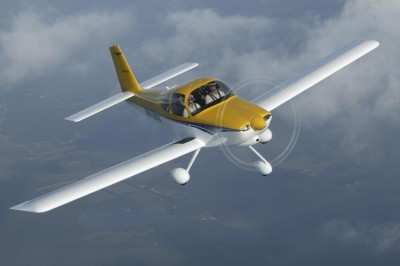
The suit was brought by April Gleason, the girl's mother, who was also aboard the RV-10 when it went down. The Oregonian reports that she suffered multiple injuries in the accident, including a broken back, sternum, and rib cage, but performed CPR on her daughter until first responders arrived at the accident scene; the parking lot of a paper mill in Toledo, OR.
The lawsuit, filed in Marion County (OR) Circuit Court, claims that Vans "Exploits (a) regulatory loophole to mass-produce "kit" airplanes while avoiding critical design, safety, and airworthiness requirements."
"As a result of the exploitation of the loopholes in the FAA's regulations as to "homebuilt" aircraft by kit aircraft manufacturers, the homebuilt aircraft market has grown substantially, such that roughly 10 percent of general aviation aircraft flown today are "homebuilt," and that homebuilt aircraft account for a disproportionate number of general aviation aircraft accidents," the suit claims. "Defendant Van's is the largest such kit manufacturer. Van's mass-produces aircraft of untested, unproven, and unsafe designs. Van's derives substantially increased profits and market share by being able to mass-produce aircraft without having to go through the FAA certification process and to demonstrate the safety of its aircraft. This gives Van's a competitive edge against its competitors that go through the certification process, such as Cessna, Piper, and Cirrus."

The NTSB's factual report on the accident says that the personal cross-country flight departed Newport Municipal Airport, Newport, Oregon, with a planned destination of Seattle, Washington. Visual meteorological conditions prevailed and no flight plan had been filed.
Numerous witnesses located in Toledo reported observing the airplane flying at a low altitude from the north. The witnesses reported hearing no sound from the airplane's engine and saw it progressively descend in altitude. The airplane approached the Georgia Pacific paper mill and made a steep turn to the left. The airplane subsequently made a rapid descent and impacted terrain in a nose-low, near-vertical attitude.
The surviving passenger recalled the flight, although was heavily medicated during the recounting of the events that transpired. She stated that she was in the aft right seat and her daughter was buckled in a car seat positioned in the aft left seat. Luggage was strapped in the front right seat in an effort to compensate for the aft weight. The departure seemed normal and the pilot commented that the engine sounded better than it had in awhile. The airplane continued the takeoff climb through some cloud wisps and ascended above a lower cloud cover, with an overcast layer above.
The passenger further stated that suddenly the engine experienced a total loss of power, which she described as the airplane stopping forward motion, and there was no engine sound. An alarm sounded, and shortly thereafter all of the airplane's electrical system failed. She recalled observing the screen in front of the pilot flickered and then went blank. The pilot was busy pressing buttons and maneuvering levers, and indicated that they were going to land at the closest airport [which was the Toledo State Airport]. The airplane descended through clouds heading toward the airport. The pilot stated that they were going to make it to the airport, and that he was looking for a place to land. The airplane made an alert sound, which she thought indicated the airplane was moving too slow. The pilot made a left turn and tried to pull up, but the airplane spiraled down harder to the ground.
The 51-year-old pilot, Douglas Nebert of Newport, OR and the girl's step-grandfather, was also fatally injured in the accident. Nebert had built the RV-10.

The suit also names FloScan as a defendant. That company sold a fuel transducer that Nebert had installed shortly before the flight, according to the lawsuit. The NTSB says in its factual report that the airplane's fuel system was a gravity-fed design where fuel flowed from the metal tanks in the inboard section of each wing, through a selector valve, and continued to a fuel filter. From the filter, the fuel was routed to an electric fuel pump and then to a transducer where it was plumbed through the firewall to the gascolator. Thereafter, the fuel was directed to the engine-driven fuel pump, and finally enter into the carburetor.
The Van's Aircraft build manual states in section 37, Fuel System, "When installing fluid fittings with pipe threads do not use Teflon tape. Use instead, fuel lube or equivalent pipe thread sealing paste."
According to the aircraft maintenance records and the recording tachometer in the cockpit, the airplane had accumulated a total time in service of 375.4 hours. The most recent condition inspection was recorded as completed by the pilot on October 4, 2013, 71.5 hours prior to the accident. Examination of the logbook revealed that the last maintenance that had occurred was an oil change and the tightening of the left magneto on February 09, 2014 at a total time of 354.2 hours.
From the pilot's photographs on his website blog, the original build, the pilot did not install the fuel transducer.
A friend of the pilot, who was also a FAA certified mechanic, stated that about two to three weeks prior to the accident, the pilot had installed the fuel transducer. The pilot commented to him that he had not installed the unit previously because it needed a certain amount of space (needed to be about seven to nine inches from the filter) and he would have to bend some of the fuel lines to make it fit. The pilot borrowed a flaring tool from him to complete the installation. The friend noted that earlier in the year, when the pilot was performing a condition inspection and the airplane's cowling was removed, he observed that the pilot had used heavy applications of red/orange RTV(room temperature vulcanization) silicone to seal everything, including the area around the airbox (oval-shaped) where it attaches to the carburetor (square-box-shaped). He mentioned to the pilot that this was an improper practice.
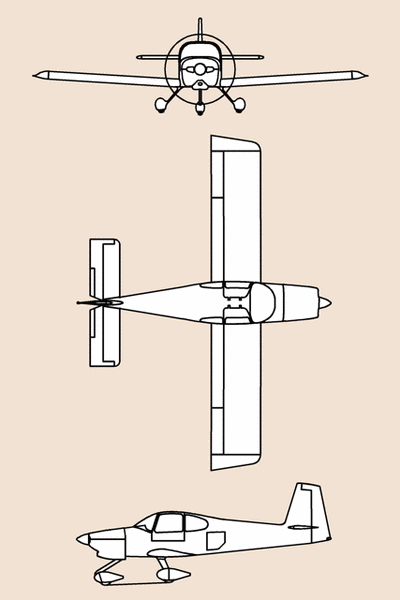
Another friend of the pilot stated that the pilot had installed a fuel transducer about one to two weeks prior to the accident flight, and noted at the time that the unit did not have a bypass. The friend also observed that the pilot had not connected the electrical wires for the transducer to be operational, but had installed the unit.
Neither Vans or FloScan (who reportedly hadn't even seen the actual suit at the time it was published by Oregon media) would comment on a pending lawsuit.
The NTSB's probable cause report, which is not admissible in court, states that the accident was likely caused by "a total loss of engine power due to fuel starvation because of a blocked fuel line that resulted from the pilot’s improper maintenance practices and the pilot’s subsequent failure to maintain adequate airspeed while attempting a forced landing, which led to the airplane exceeding its critical angle-of-attack and experiencing an aerodynamic stall."
(Van's RV-10 pictured in file photo. Not accident aircraft)
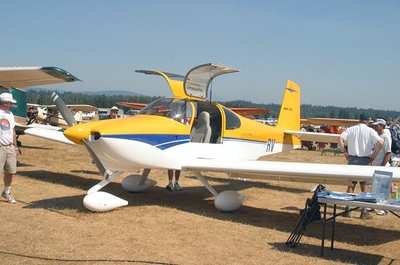
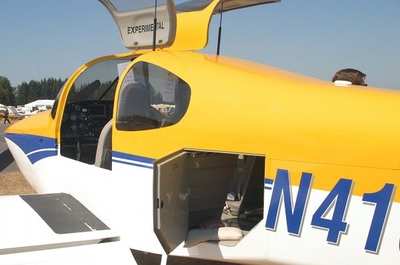
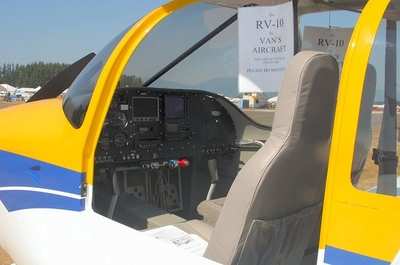
 ANN's Daily Aero-Term (04.20.24): Light Gun
ANN's Daily Aero-Term (04.20.24): Light Gun Aero-News: Quote of the Day (04.20.24)
Aero-News: Quote of the Day (04.20.24) ANN's Daily Aero-Linx (04.21.24)
ANN's Daily Aero-Linx (04.21.24) Aero-News: Quote of the Day (04.21.24)
Aero-News: Quote of the Day (04.21.24) ANN's Daily Aero-Term (04.21.24): Aircraft Conflict
ANN's Daily Aero-Term (04.21.24): Aircraft Conflict









